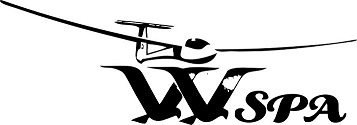Written By Ishitha Arekapudi
Flying a glider means learning how to control an aircraft without an engine. For many young pilots, it’s a great way to start because it teaches strong flying skills early on.
Awareness
After the glider is released from the tow plane, the noise stops. It becomes quiet, and you start to notice small changes in the air. You learn to pay attention to how the glider moves and responds. This helps build awareness and focus.After the glider is released from the tow plane, the noise stops. It becomes quiet, and you start to notice small changes in the air. You learn to pay attention to how the glider moves and responds. This helps build awareness and focus.
Learning by Doing
In gliders, you don’t just read about flight concepts—you experience them. You feel how the glider reacts to pitch, bank, and wind. You learn how to stay in the air by finding lift and planning your flight carefully. These lessons become part of how you think as a pilot.
Building Strong Basics
Glider flying helps develop core flight skills. Every landing matters because there’s no second chance. You learn to manage energy, make decisions, and fly with accuracy. These skills carry over into powered flight and make you a better pilot overall.
Glider flying is a simple, effective way to learn how to fly! It helps young pilots like us build strong habits, focus, and skills that last a lifetime.

